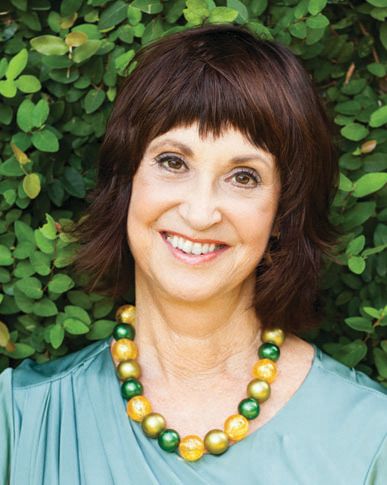Dear Reader—Who Are You?

Pam Daniel
Image: Rebecca Baxter
Years ago, during my first few months as editor of this magazine, I got on the bike at the gym and realized the woman next to me was reading our new issue. I pedaled 20 minutes longer than I’d planned, watching which pages she lingered over and which she skipped. Back in those days, our only feedback was the occasional letter or phone call, and seeing an actual, live person engage with the magazine was enthralling and affirming.
We’ve come a long way. Today, the print issue is just one of the ways we cover Sarasota—our website, social media and dozens of special events enrich and expand readers’ experience—and thanks to sophisticated analytics and surveys, we know a lot about readers and how they engage with our content. We just completed a major study of our print and digital readers, so I’m brimming with insights about who they are and what they like.
So enough about us. Let’s talk about you.
Chances are about 60 percent that you’re a woman—even higher if you’re one of our more than 26,000 Facebook fans. (That’s true for most magazine readers; some think women are drawn to the inspirational nature of magazines, with their promise to help you lead a better life.) But whatever their gender, our readers come from all over. The majority, of course, are local—about 70 percent live in Florida—but we reach people in every state. Many are snowbirds whose subscriptions follow them up North in the summer, but quite a few fly in and out during the year.
And they’re no longer concentrated in the Midwest. Reflecting the ever-widening spell our city casts, New York, Texas and California are also top markets for us. Internationally, Canada, the United Kingdom, Germany, France and—surprisingly, at least to me, India—have the most readers and digital visitors. But in Ireland, the United Emirates, Thailand, Australia, Iceland and scores of other countries, people are poring over stories about Sarasota, Florida.
Our readers range from their 20s to 80s, but the average reader—like the average Sarasota newcomer—is a baby boomer, and a well-heeled baby boomer at that. Although we have readers of every income level, half our web visitors have annual incomes of $150,000 or more; almost a quarter of print readers have annual incomes above $200,000. They also have considerable assets; half are millionaires and quite a few of them are worth $5 million or more.
How do you readers spend that money? Some goes into homes; 41 percent of you own or regularly rent second—and sometimes third or fourth—residences. That’s much higher even than readers of magazines in posh markets like Vail and Park City, Utah. And you stand out in another way as well: An impressive 74 percent of you patronize the arts, attending live theater and music performances and visiting museums and arts galleries.
You’re well-educated as well. Some 78 percent have college degrees—not unusual for city magazines. But 33 percent of you have post-graduate degrees, a high mark for any publication.
That’s reflected in what you read. City magazine readers love restaurant coverage—and so do you, with dining stories racking up huge numbers on our website and rated as “valuable” (the top measure) by 99 percent of survey respondents. But your interests extend far beyond that. In any given week, stories about the arts, city news, real estate and the environment are also top performers on our site and social media. In the survey, some 90 percent of you rated a wide array of our coverage, from outdoor guides, local history and weekend getaways to real estate, top doctors and philanthropy as “valuable.”
Becca Hersh, our parent company’s director of audience development, told us there is one key measure of a magazine’s success, and it’s simple. How often do people actually read the publication? In our distracted age of information overload, the answer is often less and less. But you’re exceptional on this measure as well.
“If 70 percent say they are reading most issues, that’s very strong,” Hersh says. “But 96 percent of your readers read most issues. That is phenomenal.”
Your exceptional engagement helps us reach higher with every issue. Thank you for being the audience of our dreams.



